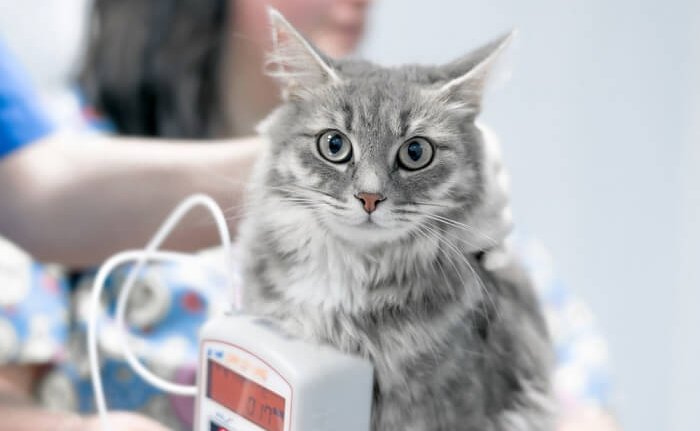
You are likely familiar with the concept of donating blood for human medical patients, but did you know that blood transfusions are also used in the veterinary field? Cats, dogs, and other small animal species can all benefit from blood transfusions when experiencing ailments such as anemia caused by injury or illness.
How Does Cat Blood Transfusion Procedure Work?
The first step in a blood transfusion is pre-transfusion testing. A number of tests are performed prior to a blood transfusion to ensure that the donor and recipient are a match.
Determining Your Cat’s Blood Type
There are three blood types in the feline blood group system: Type A, Type B, and Type AB. Type A is the most common blood type and it is found in 95% of Domestic Shorthaired cats. Type A blood is also common in Siamese, Burmese, and Russian Blue cats. Type B blood is the predominant blood type in Persians, Abyssinians, Devon Rexes, Scottish Folds, Maine Coons, and Sphinxes. Type AB blood is rare, but can occur in cats of any breed.
There is no “universal donor” in cats. Cats with Type A blood should only receive blood from a Type A donor and cats with Type B blood should only receive blood from a Type B donor, because cats with Type B blood have anti-A antibodies and cats with Type A blood have anti-B antibodies. Cats with Type AB blood are regarded as “universal recipients,” because they can receive any blood type.
Cross-Match Testing
Once your cat’s blood type has been identified and a suitable donor has been found, your veterinarian will perform a test called a cross-match to assess donor/recipient compatibility. This involves mixing small quantities of your cat’s blood and donor blood and observing the mixed samples under a microscope.
This test can help identify donor/recipient blood pairings that are associated with a high risk of reactions. In some cases, even two cats of the same blood type will show evidence of reaction on cross-matching. If this occurs, a new donor may need to be identified.
After blood typing and cross-matching, your veterinarian will collect whole blood from the donor cat. If no suitable in-house donor is available, your veterinarian may obtain blood from a blood bank instead.
Collecting a Blood Sample
The quantity of blood collected depends on several factors, including your cat’s size, the donor cat’s size, and the severity of your cat’s anemia. The blood is collected in a special bag or bottle containing an anticoagulant to prevent clotting.
After collection, this bag or bottle of blood will be connected to a fluid line, with an in-line filter to remove any blood clots that may have formed despite the anticoagulant. The fluid line will be inserted into an intravenous catheter, placed in your cat’s leg.
Blood transfusions are typically given slowly, over a period of one to three hours. A slow administration rate provides ample opportunity for the veterinary team to monitor your cat and adjust treatment if necessary. After the transfusion, your cat will likely remain hospitalized for at least 24 hours, in order to allow for post-transfusion monitoring.
Why Cats May Need a Blood Transfusion
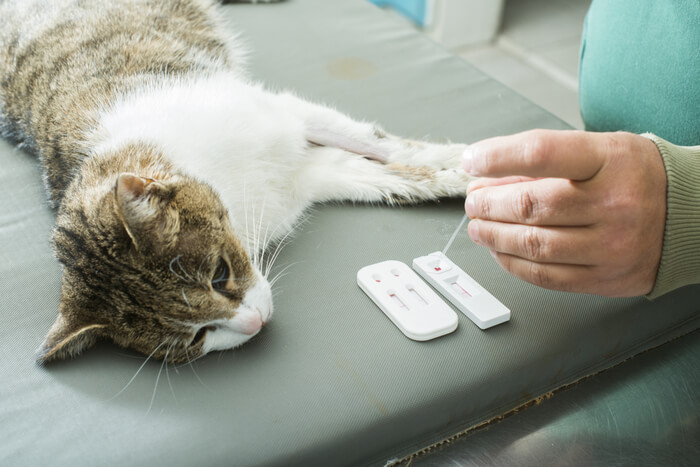
Prior to a blood transfusion, blood testing will allow your veterinarian to ensure that the donor and recipient are a good match.
Cats may require a blood transfusion for a variety of reasons. Any time that a cat experiences a significantly low red blood cell count, a transfusion may be considered. In a healthy cat, the Packed Cell Volume (PCV), or the percentage of the blood that is composed of red blood cells, is 25-45%. Most veterinarians recommend a blood transfusion when a cat’s PCV falls below 10-15%, although the cat’s clinical appearance also influences this decision.
There are a number of possible reasons that a cat can experience a loss of red blood cells or a decrease in PCV. These causes can be thought of in three broad categories: decreased red blood cell production, increased red blood cell loss, or increased red blood cell destruction.
Red blood cells are produced within the bone marrow. Any disease that affects the bone marrow can interfere with the production of red blood cells, leading to anemia. The lifespan of a normal feline red blood cell is only about two months, so without a constant supply of newly produced red blood cells to replenish dying red blood cells, anemia can and will develop.
Bone Marrow Disease
Common causes of bone marrow disease in cats include Feline Leukemia Virus (FeLV), Feline Immunodeficiency Virus (FIV), and cancer. Cats with Feline Leukemia become immunocompromised, which may lead to a range of secondary health issues.
Kidney Disease
The kidneys are also involved in triggering the production of red blood cells, so kidney disease may also lead to a decrease in red blood cell production.
Bleeding
Red blood cell loss occurs due to bleeding. While this bleeding may be caused by trauma, anemia is more commonly caused by gradual, chronic blood loss.
Common causes of bleeding in cats include gastrointestinal bleeding (ulcers or bleeding tumors), bleeding tumors elsewhere in the body, severe flea infestation, and blood clotting disorders. Increased bleeding can overcome the body’s ability to create new red blood cells, resulting in anemia.
Immune-Mediated Disease
Red blood cell destruction refers to the destruction of red blood cells within the circulation. This destruction is caused by immune-mediated disease, in which the cat’s body begins to recognize its own red blood cells as foreign.
A primary autoimmune disease may cause immune-mediated disease or may occur in response to another trigger, such as cancer, a red blood cell infection, or a drug reaction. Cats with increased red blood cell destruction may become anemic if the red blood cell destruction rate exceeds the new red blood cell production rate.
Cat Blood Transfusion Success Rate
A 2004 research study examined the survival rates of cats receiving blood transfusions. In this study of 91 cats, no deaths were attributed to the transfusion itself. However, over the course of 10 days, 36% of the cats passed away due to their underlying disease.
That is because cats requiring a blood transfusion are typically very ill. By the time a cat’s PCV is low enough to require a blood transfusion, the cat is likely to die without that life-saving care. A blood transfusion can dramatically improve the prognosis for a cat with severe underlying disease.
The impact of a transfusion is largely dependent on the cat’s underlying disease. A cat who is experiencing life-threatening anemia due to a severe flea infestation will likely have a good prognosis if a blood transfusion is given and appropriate flea treatment is administered.
A cat with cancer affecting the bone marrow may experience brief relief of weakness and lethargy from a blood transfusion, but the cat’s long-term survival will depend upon the ability to control the underlying bone marrow cancer.
Reactions to Blood Transfusions
There are two different types of transfusion reactions that can occur in cats: immunologic and non-immunologic.
Immunologic Reactions
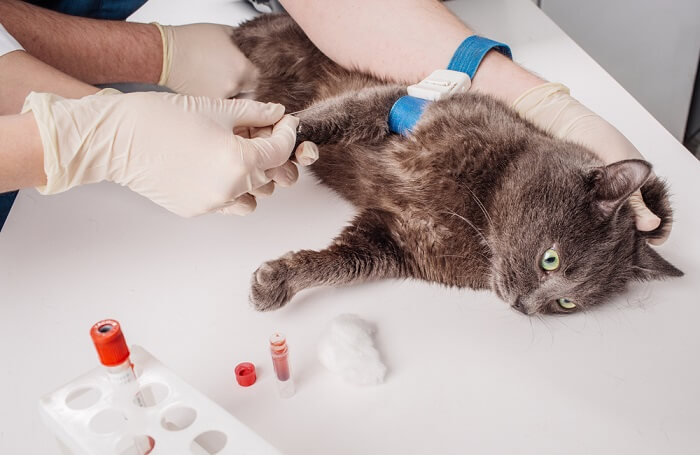
Immunologic reactions are those reactions that we first think of when we consider transfusion reactions; they involve the body’s immune response to receiving foreign red blood cells and can resemble an allergic reaction.
Nom-Immunologic Reactions
Non-immunologic reactions, in contrast, are not caused by an immune reaction. Examples of non-immunologic reactions include volume overload (a response to the fluid volume that is administered during a blood transfusion, which can place a strain on the heart and lungs), infectious disease transmission, or bacterial infection due to contaminated blood products.
Most transfusion reactions occur during the first 48 hours after receiving a transfusion. The signs and severity of these reactions may vary significantly, ranging from a mild allergic reaction to a more severe anaphylactic reaction.
Blood Transfusion Complications
The most common clinical sign of a transfusion reaction is a fever, which indicates an immune response to the foreign red blood cells. In some circumstances, this reaction may progress to include hives, skin inflammation, itching, vomiting, and/or diarrhea. Pale gums may also develop, in addition to an elevated heart rate and/or respiratory rate. If signs of a transfusion reaction are noticed during a blood transfusion, your veterinarian will immediately stop the transfusion.
In some cases, an immunologic transfusion reaction may involve the breakdown of the transfused red blood cells. The body’s immune system recognizes these cells as foreign and attacks them. This is called a hemolytic reaction and may result in jaundice. Cats may develop a yellow discoloration of the gums or the whites of the eyes. Regardless of whether the reaction occurs during or after the transfusion, your veterinarian will administer treatments to halt the reaction.
These treatments may include antihistamines, corticosteroids, and/or epinephrine, depending on the severity of the reaction. Your cat may also require intravenous fluids to help support circulation and maintain blood pressure.
These treatments may be short-lived, or your cat may be discharged on a prolonged course of immunosuppressive drugs to prevent further reactions until the red blood cells have served their purpose and been cleared from circulation.
It’s important to note that most transfusion reactions can be corrected with medical care. While life-threatening reactions can occur, the 2004 feline transfusion study did not find any evidence of life-threatening transfusion reactions in the 91 cats included in the study.
Veterinarians carefully balance the risks and benefits of blood transfusions, only recommending them for those cats in which the risk of untreated anemia exceeds the risk of a significant transfusion reaction.
Recovering From a Blood Transfusion
Recovery from a blood transfusion depends largely on the underlying disease responsible for the anemia. In most cases, you will notice an immediate improvement in your cat’s condition after the blood transfusion. Restoring normal numbers of red blood cells will improve your cat’s oxygen circulation and overall energy levels.
Post-transfusion care will depend on your cat’s underlying condition. Your veterinarian may prescribe antibiotics to treat an infection. They may prescribe corticosteroids if your cat has an immune-mediated disease. If your cat has open wounds or sutures, they may need to wear an e-collar (cone).
Cat Blood Transfusion Cost
The cost of a blood transfusion will vary significantly depending on the cat’s overall condition, the volume and quantity of transfusions required, and the side effects that may develop. Most transfusions are performed at specialty hospitals so cats can receive the necessary 24-hour monitoring.
The cost may range from $500 to $2,000, although the total will likely be higher in critically ill cats or those who experience complications. The number of transfusions needed will vary by initial results and the disease that caused the cat’s anemia. If your vet is able to treat the root cause of your cat’s anemia, the circulatory system will take over, and further transfusions will not be necessary.
Read More: Best Pet Insurance Providers Reviewed
Frequently Asked Questions
Where do they get blood for cat transfusions?
Most feline blood transfusions involve the use of blood collected from a donor cat. Blood substitutes, such as Oxyglobin®, are also available and may be used when a blood donor is not available.
How long is a cat blood transfusion?
The duration of a blood transfusion varies, based upon the volume of the transfusion and the cat’s medical condition. In general, most transfusions are given over a period of one to three hours.

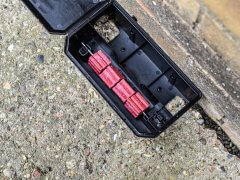

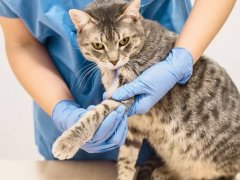
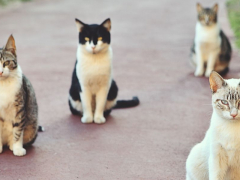


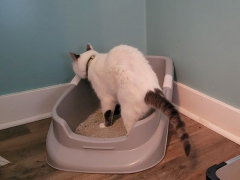
I was left with the hardest decision in my life they just wanted money 8-10thousand for a blood transfusion or your only family member will not be around I didn’t have the money wasn’t allowed to go on a payment plan and was left to make the most heart breaking decision in my life I have never felt loneliness until the second I had to make the most ultimate decision of both our lives I had not cried this much when my mom died now I’m left with a big hole in my heart and I’m t to blame myself for not being able to afford to get a transfusion for the only one that made me get up every morning I love you orangie my baby I miss you
I’m sorry, Chris. 🙁
This is price gouging! My cat JUST got a transfusion at one of the big groups of Veterinary Emergency (VEG) and the whole ER visit, transfusion plus a full night of hospitalization went down to about $2000 which is consistent with the article; so FIVE to SIX thousand???? This is despicable price gouging from your vet and it is even criminal because animals get killed over estimates like that so this is deeply unethical and should be reported as such. Can you name names so that people know where NOT to go if their pet needs help?
Let’s remember that vets take an oath to do what is best for the animals. Let’s also remember that vets complain left and right that there is a high rate of suicide in their profession but I would also want to kill myself if I was one day coming to the realization that so many animals were killed because of my greed and that my brand new Mercedes and an overstaffed office have blood all over them!
Where are you located? City/state. My cat will need repeated transfusions & like Chris the emergency vet charged us 10k for her first transfusion
It is so sad to know my baby needs a blood transfusion and it is so expensive 5thousand 2hundred dollars.
Veterans need to help in some way to assist in price for your pet that play a big part in your live.thank you.
I wish we have some options and some better prices. We are trying to save our fur babies. Check your veterinary school in you state.
My cat needs a blood transfusion at soon as possible
Hi I have a cat that is not 2 old I would say around 4 to 5 years he was pretty healthy and solid and all of a sudden became ill …apparently needs a blood transfusion the vet I have brought him to are saying 3 to 6 thousand dollars I have noticed the price you have said in this is a lot lower I’m just wondering if how it could be so much for the same thing any ideas ???? Have you heard of it being this crazy amount
Hi there, you may want to consult with other local veterinarians to see if you can find a lower price in your area.
Every vet in my local area of California far exceeds the averages stated anywhere on the internet. Not sure what state you are in, but it’s the case for many other services and products too.